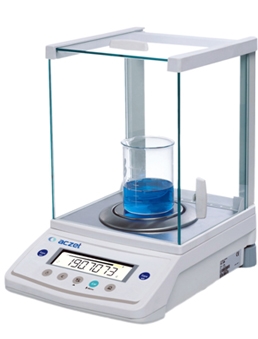Lab balances are a type of balance used in chemistry. They usually have pocket-size scales on one or both pan plates that allow precise weighing. These can be used to weigh chemicals, which must be further measured using various laboratory instruments such as volumetric flasks and burettes. There are different types of lab balances in the market. They all have different features and recommendations for use. The two most used lab balances are Analytical Balance and Precision Balance.
Analytical Balance

The analytical balance is the most used in the laboratory. It is used to measure minimal weights with accurate precision. Analytical balances are used for quantitative chemical analysis because of their highly sensitive nature. The weights may be placed in the balance pan or the beam scale. Because of the high sensitivity, the air currents can also affect the weight. One of the main advantages of analytical balances is that they are easy to use and accurate results. Also, they can measure the weight of any sample up to 320 grams.
Pros of Analytical Balance
- Accurate Weighing: The analytical balance is highly sensitive and considered a reliable weighing source.
- Easy To Use: Unlike other balances, analytical balance is quite easy. Also, the working principle of the analytical balance is simple and easy to understand.
- Exact Weight Figure: In analytical balance, weight is measured accurately with 1 to 5 mg precision.
- Automatic Temperature Compensation: The analytical balance has an automatic temperature compensation feature. So your weight will not be affected by the temperature.
Cons of Analytical Balance

- Need to Calibrate: All analytical balances need to be calibrated regularly because they automatically compensate for ambient temperature. It will not give accurate results if its calibration is not calibrated.
- Expensive: The analytical balances are quite expensive. The high price can be justified because of its functions and accuracy.
- Precision Balance
The precision balance is an electronic balance specifically designed for measurements and weighing of small weights up to 200 grams. These balances are used in laboratories to measure the weight of very small amounts of chemicals, and they are cheaper than the Analytical. As for accuracy, Precision balances are less accurate than Analytical balances and are therefore also called semi-Analytical balances. The weight figure shown by these types of balances is up to three decimals which is not as accurate as of the Analytical balances. Also, they are not much sense, and thus their weight results can be altered by exterior factors like air currents.
Pros of Precision Balance
- Low-Cost Analytical Balance: These balances are relatively cheaper than the analytical balances and can perform almost the same functions.
- Advanced Measurements: Precision balances are very helpful when measuring a small amount of substance.
Cons of Precision Balance
- Not Very Sensitive: The sensitivity of these types of balances is not as sensitive as that of analytical balance. Their accuracy may not be 100%.
- Low Accuracy in Small Amounts: It may show an inaccurate figure with lower accuracy than an analytical balance when it measures a small amount. Also, the weight shown will be three decimal which is not accurate for a weighing device.
Why Is Lab Balance Essential Equipment For Every Lab?
Lab balances are considered an essential tool in a laboratory. It is the most important equipment used in the lab and instrumentation. The most important purpose of a laboratory balance is to provide accurate results, making it a necessary piece of equipment. Lab balance is considered an integral part of any weighing system in the manufacturing field because it provides accurate results.
Sometimes, finding the number of different balances is not easy when there are many materials to be measured and weighed at once. Then one will have to choose between speed and accuracy or vice versa. For example, if production or supply speed was an issue, one could go for high-speed balances, but if accuracy was needed, high accuracy balances would have to be chosen.
A lab balance is also a great tool for qualitative analysis alongside the qualitative analysis of chemical syntheses. With these balances, one can measure the weight of a certain chemical and the concentration of that chemical as well. This is quite helpful because another way is to use a spectrophotometer or a refractometer. Still, some analytical balances can measure weight and concentrations by weighing them on different scales.
Conclusion
In conclusion, both Analytical and Precision balances have their advantages and drawbacks. They both can be used in a laboratory, depending on the person’s need. Both are important for chemical laboratories because these balances provide accurate results wherever they are used.












